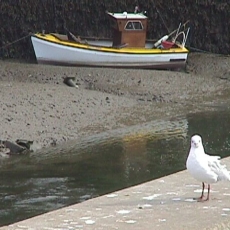Fishing
There has been a fishing industry in the Solway Firth for centuries.
Today, the commercial operations are largely confined to boats sailing out of the harbours of Maryport and Silloth with plaice, skate and whitefish their primary catch.
But there are more varieties to look out for around the Solway Coast Area of Outstanding Natural Beauty. The Firth’s tides and complex currents help supply plentiful nutrients, which in turn support a rich diversity of marine life. The fact the estuary is warmed by the Gulf Stream also means that most of the species which swim in British waters are found here. It is said it is not uncommon to catch nine different varieties in a day from a boat.
Back in the days of the Holme Cultram monks, salt harvesting was carried out to preserve the catch, while, more recently, smokehouse businesses have been built up in Maryport. One of the biggest of these is Grants, which specialises in smoked salmon, and exports around the globe.
Sea angling is a popular pastime with locals and visitors alike and it’s a rarity not to see at least one person fishing from Silloth’s promenade. Tope, ray, pollock and sea trout are their usual catch.
There is a small amount of non-commercial cockle fishing here, with mussels being hand gathered when the stocks of shellfish are plentiful.
Through the summer months, the age-old tradition of haaf netting still takes place. It is a fishing method which is Scandinavian in origin – haaf is the Norse word for channel. The fishing involves hardy participants wading waist deep with rectangular wooden frames to support the nets which are divided into two pockets or ‘pokes’. As the haaf net is placed in the incoming or outgoing tides, sea trout or salmon are caught in the pokes.
Haaf netting is allowed under licence from late February to early September though the chilly water temperatures generally mean it is too cold to fish before April. Read what it’s like to go haaf netting here.
Another traditional form of fishing here is fluke or flounder paddling. It’s usually done at Cardurnock and Skinburness, north of Silloth, and sees participants wander barefoot through the shallows at low tide, either probing the sea bed with a sharp pronged fork, while feeling for the fish with their feet, or catching them by hand.








